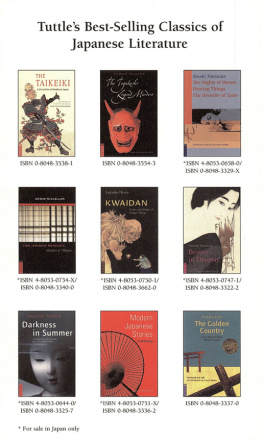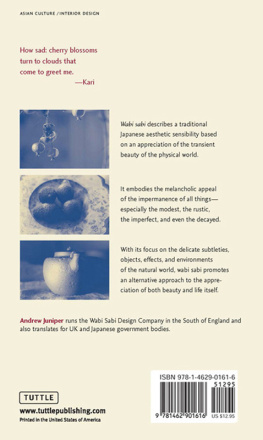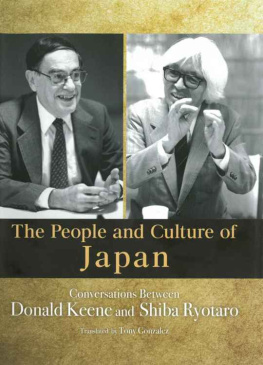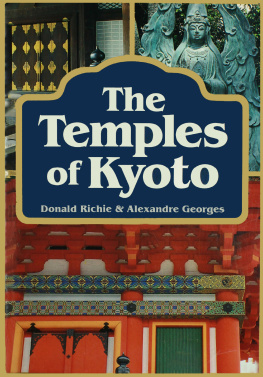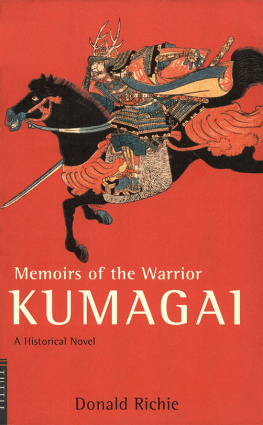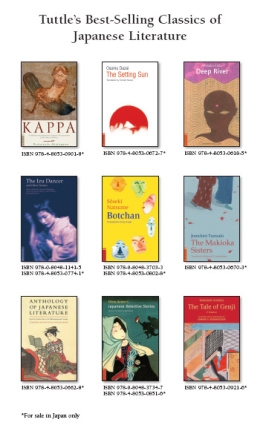IN WRITING ABOUT traditional Asian aesthetics, the conventions of a Western discourseorder, logical progression, symmetryimpose upon the subject an aspect that does not belong to it. Among other ideas, Eastern aesthetics suggests that ordered structure contrives, that logical exposition falsifies, and that linear, consecutive argument eventually limits.
As the aesthetician Itoh Teiji has stated regarding the difficulties that Japanese experience in defining aesthetics: The dilemma we face is that our grasp is intuitive and perceptual rather than rational and logical. Aesthetic enjoyment recognizes artistic patterns, but such patterns cannot be too rigid or too circumscribed.
Most likely to succeed in defining Japanese aesthetics is a net of associations composed of listings or jottings, connected intuitively, that fills in a background and renders the subject visible. Hence the Japanese uses for juxtaposition, for assembling, for bricolage.
In any event, for any consideration of aesthetics, East or West, the quality of apprehension is sensibilityan awareness, a consciousness, a sensitivity. It is alive and often unfriendly to interpretation, and if it is to be pinned to the page, then feints and indirections are some of the means.
We thus should not strive for logical conclusions. Rather, we ought to define those perceptions and variances of aesthetic appreciation through a style that conveys something of the very uncertainty of their description.
Many Japanese writers prize a quality of indecision in the structure of their work. And something too logical, too symmetrical is successfully avoided when writers ignore the suppositions of the questions asked of them. It is then not the assumptions of the writers controlling mind that are followed but, as the Japanese phrase it, the brush itself.
Zuihitsu , the Japanese word we might translate as essay, implies just thatfollowing the brush, allowing it to lead. The structure is the multiplicity of strokes that make up the aesthetic quality, one which they imply and which we infer.
In this book I have sought to approximate this neglect of logical method, this dismissal of linear structure, and both in the text and in its placement on the page I have attempted to give some idea of the progression of a zuihitsu.
THE TRACTATE
AESTHETICS IS THAT branch of philosophy defining beauty and the beautiful, how it can be recognized, ascertained, judged.
In the West the term was first used in 1750 to describe a science of sensuous knowledge. Its goal was beauty, in contrast with logic, whose goal was truth. Based upon dichotomies (beauty/truth, aesthetics/logic) the definition was elaborated into a multi-faceted concept assuming that opposites and alternates lead to an aesthetic result. The conjectures and conclusions were those of eighteenth-century Europe but are still common today.
There are, however, different criteria at different times in different cultures. Many in Asia, for example, do not subscribe to general dichotomies in expressing thought. Japan makes much less of the body/mind, self/group formation, with often marked consequences. Here we would notice that what we would call Japanese aesthetics (in contrast to Western aesthetics) is more concerned with process than with product, with the actual construction of a self than with self-expression.
The Western concept finds beauty in something we admire for itself rather than for its uses, something that the philosopher Immanuel Kant (17241804) called purposiveness without a purpose. Traditional Japan emphasizes differently. It is closer to such pre-Enlightenment European definitions as Chaucers Beautee apertenant to Grace, where the grace of fitness excites intellectual or moral pleasure and gives rise to the concept of social approval in the form of good taste.
Jean de la Bruyre, the French moralist, early in the seventeenth century defined the quality: Entre le bon sens and le bon got il y a la diffrence de la cause et son effet. Between good sense and good taste there is the same difference as between cause and effect, an observation with which Chaucer, as well as the aesthetically traditional Japanese, might have agreed. In matters aesthetic, taste remains an observation of deserved worth, and that should take care of thatexcept that we are not all agreed as to what good sense consists of.
Some countries say one thing, some say another. The Japanese traditionally maintain that we have been given a standard to use. It is there, handy, daily: things as they are, or Nature itself. This makes good sense, the only sense, reallyNature should be our model, we are to regard it, to learn from it. When Keats upset aesthetic patterning in the West with his notorious assertion that truth is beauty; beauty, truth, he was very close to the Asian notion that these are identical and to the suggestion that dichotomies are tools too dull to delineate the wholeness of observation.
The flowing river never stops and yet the water never stays the same.
Foam floats upon the pools, scattering, re-forming, never lingering long.
So it is with man and all his dwelling places here on earth....
The place itself does not change, nor do the crowds.
...
Even so, of all the many people I once knew only one or two remain.
They are born into dusk and die as the day dawns, like that foam upon the water.
People die and are bornwhence they come and where they go, I do not know....
A house and its master are like the dew that gathers on the morning glory.
Which will be the first to pass?
KAMO-NO-CHOMEI (11531216)
from Hojoki (An Account of My Hut),
translated by Yasuhiko Moriguchi
and David Jenkins
Bruyres aperu is, indeed, so sensible that one would expect it to apply just everywhere. It does not, but it does to Japan. As the aesthetician Ueda Makoto has said: In premodern Japanese aesthetics, the distance between art and nature was considerably shorter than in its Western counterparts. And the novelist Tanizaki Junichir has written in that important aesthetic text In Praise of Shadows : The quality that we call beauty... must always grow from the realities of life.
Among the qualities that can be derived from the assumptions of traditional Japanese aesthetics Donald Keene has distinguished suggestion, irregularity, simplicity, and perishability. These might indeed be seen as basic ingredients in traditional Japanese taste but, at the same time, Keene notes that exaggeration, uniformity, profusion, and durability are by no means absent.
Western aesthetics is sometimes familiar with simplicity, asymmetry, and suggestion, but the idea that beauty lies in its own vanishing is an idea much less common. Perishability remains, however, what Keene has called the most distinctively Japanese aesthetic ideal. It is certainly among the earliest, being based on the Buddhist concept of mujo , a term usually translated as impermanence: nothing is stable, and our only refuge lies in accepting, even celebrating this.



